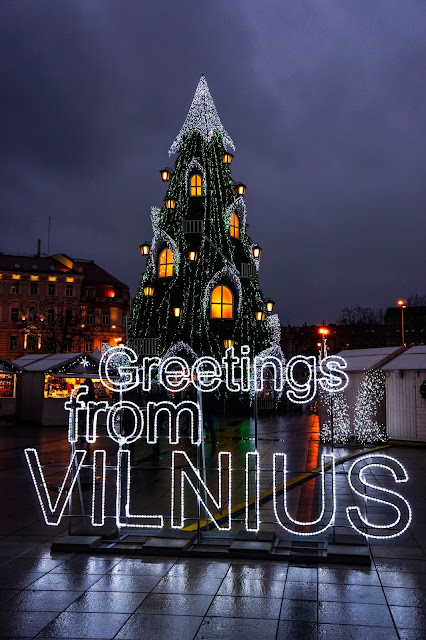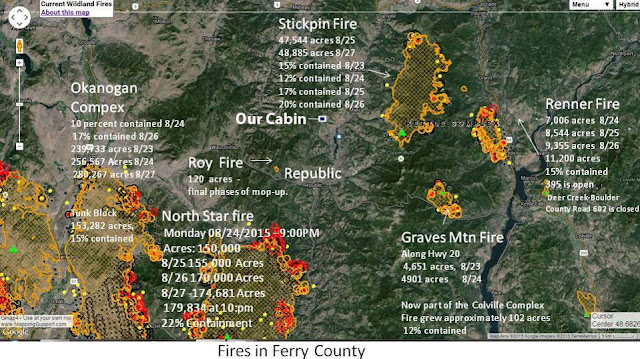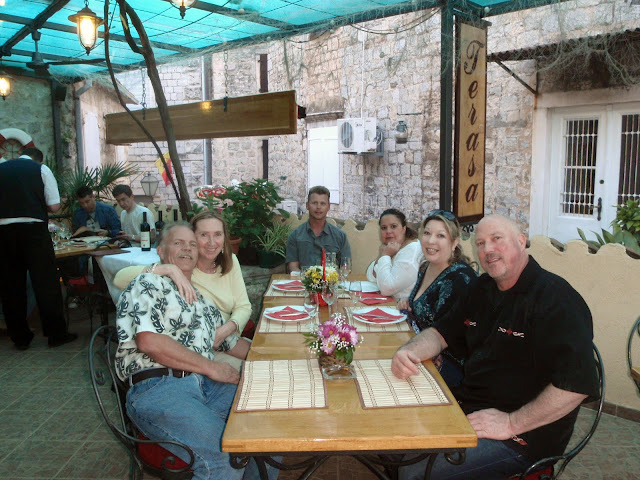The following was written in May, 2016, remembering an event that happened when I first arrived in Vilnius. I have now been here for a year and a half and expect to be here for another year.
It was mid-October, 2014 and there was a definite chill in
the air, although there wasn’t any snow on the ground yet. I had just arrived in
Vilnius, Lithuania after spending a year working in Ho Chi Minh City, Vietnam. I
was staying in a hotel near the embassy district, and I had just begun to get
acquainted with a new job in a new city.
I had a day off and I headed out into the bright sunshine of a Sunday afternoon, donning the light jacket I had brought from Ho Chi.
Like most European cities, Vilnius has an ‘old town’. It is
full of narrow, cobblestone streets lined with ancient buildings, some older
than anything the states have to offer. Oozing history, these worn stone and
brick former granaries, stables and mills were now pubs, restaurants, gift
shops and art galleries. I had a day off and I headed out into the bright sunshine of a Sunday afternoon, donning the light jacket I had brought from Ho Chi.
From my hotel, the shortest route into old town for someone
walking ended in a footpath through a short tunnel that dumped right out into
the middle of one of the main tourist streets. Stepping onto the cobbled street
I was greeted by a view of a castle past the end of the street to the left. It
was on my list to explore, but not that day.
From up the street to my right, a gust of frigid air made me
zip up my jacket tighter around my neck.
Directly across the street from the arched tunnel was an art
gallery. Out in front of the art gallery stood an old man, singing a song in a
language I couldn’t follow, his hat on the ground in front of him. Several
inches shorter than me and sporting a bit of belly, he had a long, yellowish
tobacco-stained beard, a ragged tonsure of the same color with just a few wisps
of hair on top. His pants were old and baggy, and he wore a faded jacket with
an old, equally faded patch on the elbow. The sound of his singing followed me as
I wandered up the street, scanning the shops and restaurants.
I finally stopped at a café that hadn’t yet put its sidewalk
tables away for the season. I ordered a beer and sat for a while. As I waited
for my beer, I took in the unfamiliar scene and watched the parade of
pedestrians in scarves and sweaters, bundled up against the weather. When my beer
arrived I sipped on the tall mug and decided I could have ordered something
warmer to drink, as the cold started to creep in through my light jacket.
The afternoon grew cooler, and the low sun cast long shadows
on the sides of the buildings, having already abandoned the cobblestones. I
paid for my beer, left a tip and pocketed the remaining two euro coin. After
looking farther up the row of shops, I jammed my hands into my jacket pockets, turned
and headed back down the street the way I came. The old man was still in the
same spot. His jacket didn’t look any warmer than mine was.
I remembered the two euro coin in my jacket pocket and
headed across the lane to put it in his hat. As soon as I dropped the coin, the
old man grabbed my hand in both of his and thanked me with a gap-toothed grin.
He said something I didn’t understand.“I’m sorry,” I said “English?”
“Neh, Lithuanian?” he asked.
“No, sorry,” I replied.“You speak Russian?” he asked.
“No, I’m afraid not”.
Still holding onto my hand, he said, “I don’t know any songs
in English. Can I sing you a Russian song for your coin?”“Sure”, I said.
It was apparent I
wouldn’t be going anywhere until he let go of my hand.
He began to sing one song, changed his mind after a moment and
launched into what I imagined might be a Russian marching song. It sounded very
patriotic, and he sang it with a fervor that made his deep-set eyes glisten.
By the third verse, I began to wonder what it would take to
retrieve my hand from his grip. I noticed a man walking on the other side the
street smile broadly at me, as if to say, “He’s got you now. You must be new
around here.”
It was about this time that I noticed someone dressed in a large black and white cow costume walking toward us. The costume was complete with an udder that looked like a yellow, plastic, four-legged stool glued to the shaggy stomach. The cow was carrying a basket full of purple-wrapped chocolate bars, and had been handing them out to passers-by on the street. It stopped in front of me and put a chocolate bar into my free hand. The cow then turned to the old Russian and attempted to give him a bar as well, but he waved it off and sang a bit louder. The cow turned back to me and with a shrug handed me the second bar. Somewhere in that exchange my hand came free. Making good my chance for an exit, I backed up, smiling and bowing to each in turn. The song trailed off. The old Russian and the chocolate cow stared at me as I turned and ducked hastily back through the same archway I had emerged from earlier.
“Well,” I thought to myself as I walked back towards the
hotel, unwrapping the corner of one of the chocolate bars, “That was
interesting”.It was about this time that I noticed someone dressed in a large black and white cow costume walking toward us. The costume was complete with an udder that looked like a yellow, plastic, four-legged stool glued to the shaggy stomach. The cow was carrying a basket full of purple-wrapped chocolate bars, and had been handing them out to passers-by on the street. It stopped in front of me and put a chocolate bar into my free hand. The cow then turned to the old Russian and attempted to give him a bar as well, but he waved it off and sang a bit louder. The cow turned back to me and with a shrug handed me the second bar. Somewhere in that exchange my hand came free. Making good my chance for an exit, I backed up, smiling and bowing to each in turn. The song trailed off. The old Russian and the chocolate cow stared at me as I turned and ducked hastily back through the same archway I had emerged from earlier.










































